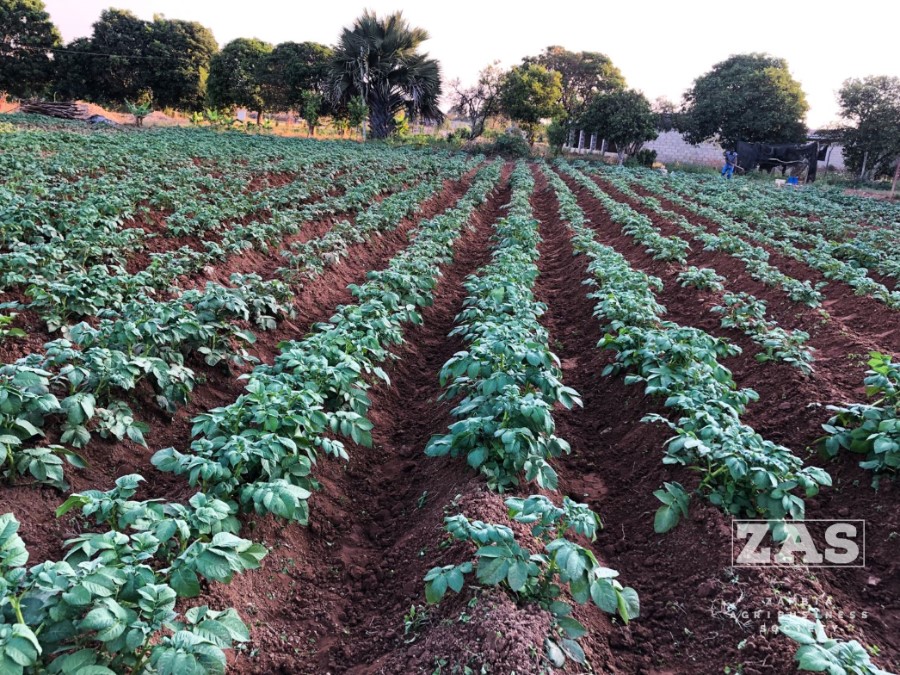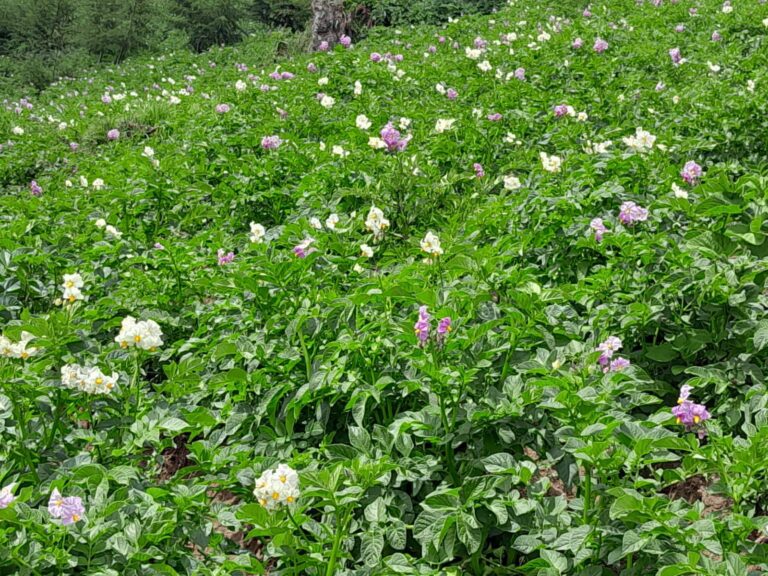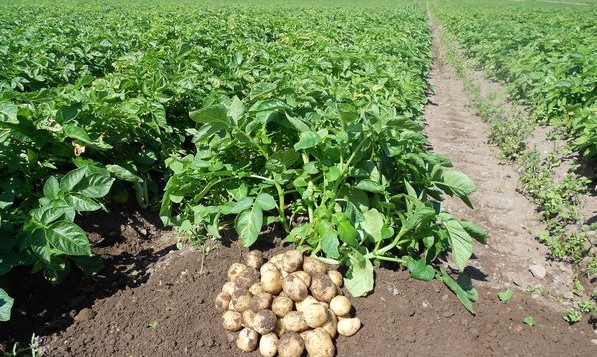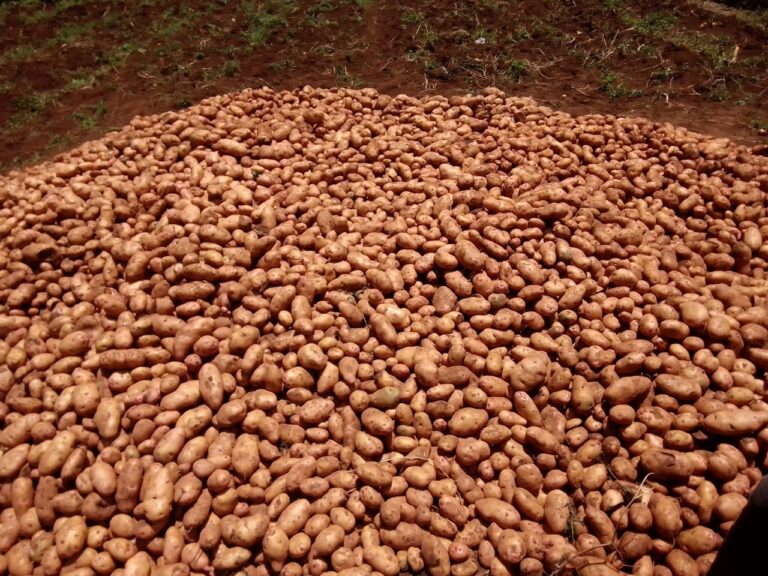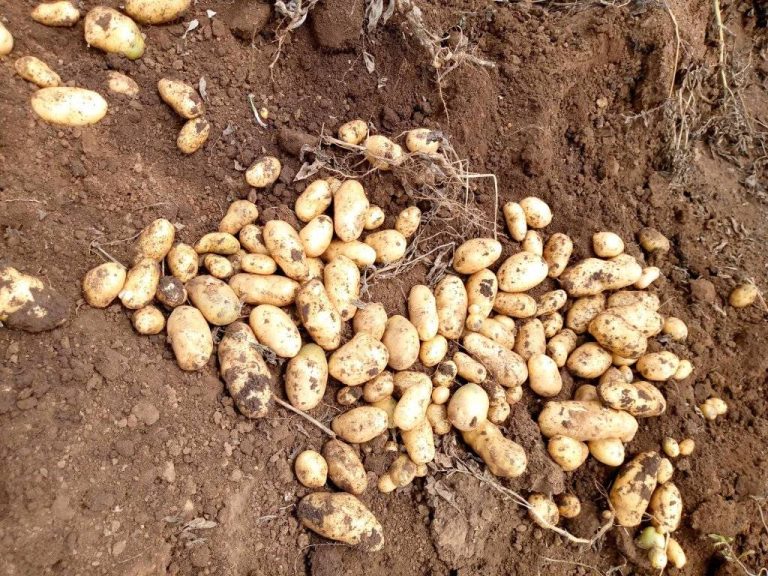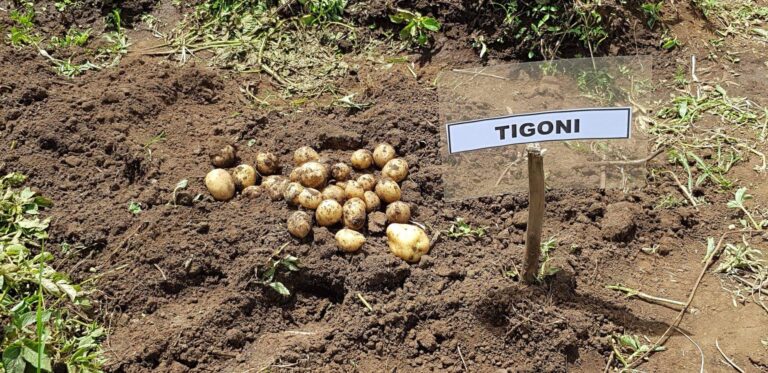Does Hilling Potatoes Increase Yield?
Yes, hilling potatoes can increase yield by helping them grow bigger and stronger. Hilling involves covering the potato plant stem with soil as it grows, keeping it moist and protected from the sun.
This practice helps with vine development and creates more stem area for the flower and bud clusters.
Hilling potatoes can indeed increase yield in several ways. Firstly, hilling helps to create a stronger and healthier root system for potato plants, leading to increased productivity.
This is because the additional soil provided by hilling promotes better nutrient uptake and water retention, essential for robust plant growth.
Moreover, hilling protects the developing potatoes from exposure to sunlight, which can cause them to turn green and become inedible.
By covering the potatoes with soil, hilling prevents this greening process, ensuring a higher yield of quality tubers.
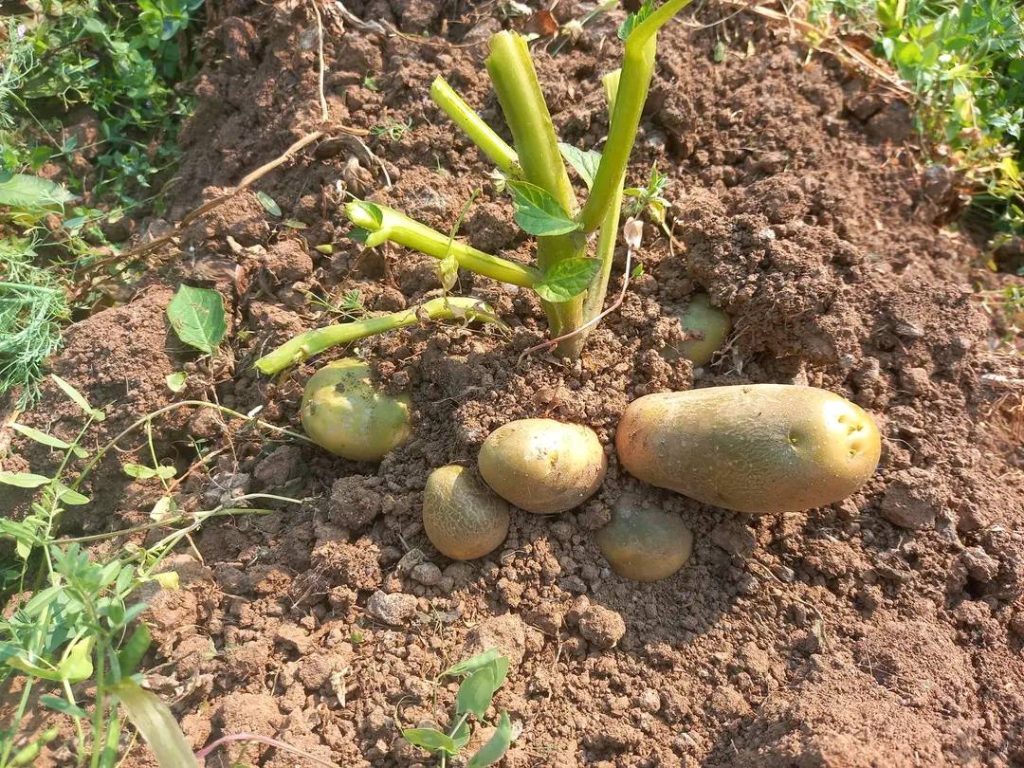
Hilling can also help to control weeds, which compete with potato plants for resources, further enhancing yield.
Key Takeaways
- Hilling potatoes does not directly increase yield in modern potato varieties.
- The main purpose of hilling is to protect the potatoes from greening and varmint damage.
- Hilling also helps control the temperature around the tubers, but it is not necessary for maximizing potato yield.
- Proper variety selection, soil preparation, watering, and disease control are crucial for maximizing potato crop production.
- While hilling can contribute to healthier plants, it is just one component of a comprehensive approach to potato cultivation.
Why Do We Hill Potatoes?
Hilling potatoes serves several purposes. First, it prevents the exposed potatoes from turning green, which can make them bitter and potentially toxic. Green potatoes contain solanine, which can cause illness in large quantities.
By hilling the potatoes, we provide them with the necessary earth cover, shielding them from sunlight and preventing greening.
In addition to protecting the tubers, hilling also plays a vital role in frost protection. By mounding soil around the stalks, we create a barrier that insulates the potatoes from frost damage.
This extra layer of soil acts as a buffer, helping to maintain a more stable temperature and reducing the risk of frost-related harm.

Furthermore, hilling helps smother weeds that compete with potato plants for nutrients and moisture.
By covering the area around the stalks with soil, we create a barrier that limits weed growth, allowing the potato plants to receive the necessary resources for optimal growth. Weed control is essential for maximizing potato yield.
Benefits of Hilling Potatoes:
- Prevents greening of potatoes
- Protects tubers from frost damage
- Smothers weeds for better nutrient absorption
- Provides stability to growing plants
| Benefit | Description |
|---|---|
| Prevents greening of potatoes | Hilling shields the potatoes from sunlight, preventing the formation of chlorophyll and the development of green skin. Green potatoes can be bitter and potentially toxic. |
| Protects tubers from frost damage | The soil mound formed by hilling acts as insulation, protecting the potatoes from freezing temperatures and reducing the risk of frost damage. |
| Smothers weeds for better nutrient absorption | Hilling creates a barrier that suppresses weed growth, ensuring that the potato plants have access to all necessary nutrients and moisture for optimum growth. |
| Provides stability to growing plants | The additional soil added through hilling provides support to the growing potato plants, reducing the risk of toppling over and minimizing the need for external support structures. |
How and When to Hill Potatoes?
Hilling potatoes is a simple yet essential technique in potato farming that can improve crop yield. Knowing how and when to hill potatoes is crucial for maximizing the potential of your potato plants. Here are some potato farming techniques to help you achieve optimal results:
1. Timing the Hilling Process
The timing of hilling is crucial for the success of your potato crop. It is recommended to start hilling when the potato plant stems reach a height of 6 to 8 inches. At this stage, the plants have developed enough foliage to benefit from the added soil and protection offered by chilling.
Repeat the hilling process every time the stems grow to the desired height, ensuring that the tubers remain covered and protected.
2. Proper Hilling Techniques
To hill potatoes effectively, carefully add soil around the growing potato stalks, covering them almost completely. Leave only the top leaves exposed above the soil.
This process helps control the temperature around the tubers, prevents greening, and provides stability to the plants. Protect the hills from erosion by creating a barrier using wire mesh or repurposed materials such as old tires, bricks, or stones.
3. Consistency and Maintenance
Consistency and regular maintenance are key to successful potato hilling. As your plants continue to grow, repeat the hilling process to ensure the tubers are adequately covered.
This helps protect the potatoes from greening and varmint damage, as well as provides a controlled environment for optimal tuber development.
Maintaining the hills by keeping them protected from erosion and weeds will contribute to the overall health and productivity of the potato crop.
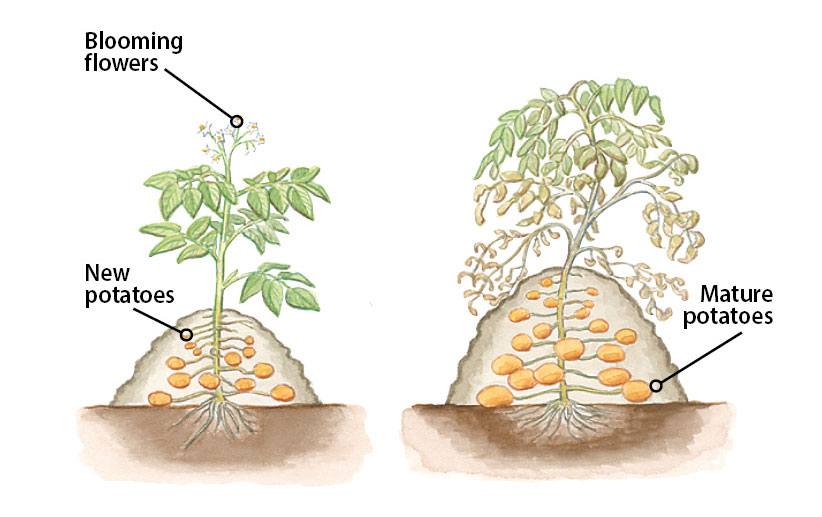
| Benefits of Proper Potato Hilling | |
|---|---|
| 1. | Prevents greening of potatoes |
| 2. | Protects tubers from varmint damage |
| 3. | Controls temperature around tubers |
| 4. | Provides stability to growing plants |
| 5. | Smothers weeds, enhancing nutrient uptake |
Materials for Hilling Potatoes
Hilling potatoes is a crucial technique in potato cultivation to protect the tubers and enhance plant growth. While soil is the most common material used for hilling, there are other options available that can provide additional benefits.
Here are some materials commonly used for hilling potatoes:
1. Soil:
Soil is the go-to material for hilling potatoes as it provides the necessary coverage and nutrients. It helps protect the tubers from greening, regulates temperature, and suppresses weed growth
Ensure the soil is loose and friable to allow proper aeration and root development.
2. Straw:
Adding a layer of straw over the soil serves as an effective mulch for potato hilling. It helps retain moisture, keeps the soil cool, and prevents sunlight from reaching any protruding potatoes. Additionally, straw acts as a natural weed suppressor, reducing competition for nutrients and water.
3. Grass Clippings:
If you have access to grass clippings free of herbicides or pesticides, they can be used as an alternative for hilling potatoes. Apply a thick layer of grass clippings around the stalks, providing insulation and weed control.
However, avoid using grass clippings from treated lawns, as they may contain harmful chemicals that can affect potato growth.
4. Compost:
Compost is an excellent option for hilling potatoes, especially after harvest. By mixing compost into the soil, you can improve its structure, fertility, and water-holding capacity. This enriches the growing environment for potatoes and prepares the soil for future crops. Ensure the compost is well-rotted and free from any weed seeds to avoid unwanted plant growth.
While hay and peat moss are also viable materials for hilling potatoes, they may come with certain drawbacks. Hay often contains weed seeds, leading to weed issues in the potato bed. Peat moss, on the other hand, can reduce water absorption in the soil, potentially affecting moisture levels.
As such, it’s essential to consider the specific requirements of your potato crop and choose the most suitable material for hilling.
| Material | Benefits |
|---|---|
| Soil | Provides coverage and nutrients, regulates temperature, suppresses weeds |
| Straw | Retains moisture, keeps soil cool, prevents sunlight exposure |
| Grass Clippings | Insulates soil, controls weeds |
| Compost | Improves soil structure and fertility |
FAQ
Why do we hill potatoes?
Hilling potatoes serves several purposes, including protecting them from greening and varmint damage, controlling temperature, and smothering weeds.
How and when should potatoes be hilled?
Potatoes should be hilled when the stalks reach a height of 6 to 8 inches. Soil is piled up around the stalks, covering them almost completely.
What materials can be used for hilling potatoes?
Soil is the most common material used, but other options include straw, grass clippings (free of herbicides or pesticides), compost, hay, and peat moss.
Does hilling potatoes contribute to maximizing yield?
While hilling can contribute to healthier plants, maximizing potato yield relies on factors such as variety selection, soil preparation, watering, and disease control.
